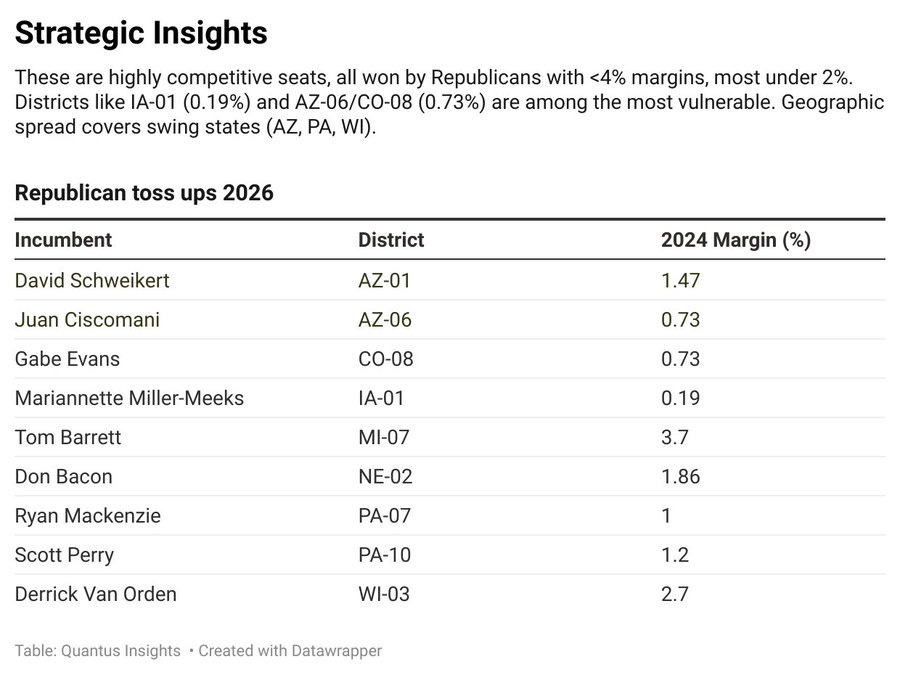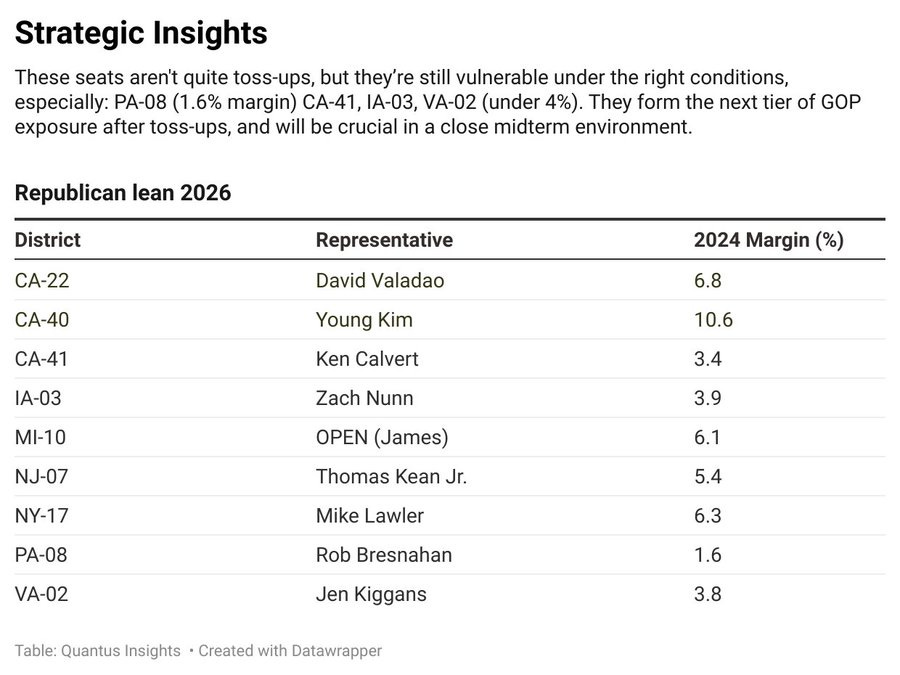The House on a Razor’s Edge
With just a 220–212 lead, Republicans face a full-scale siege across 18 vulnerable districts.
Democrats see a path to reclaim the House in 2025 but that path is narrow, steep, and unforgiving. With an expected starting point of 205 seats to the GOP’s 211, they’ll need to lock down all 22 of their own competitive districts and flip at least 13 of the 18 most vulnerable Republican-held seats. There’s no margin for error.
Let’s be clear. This is not 2018. That was a wave year. Democrats rode anti-Trump backlash and a media frenzy to a +8.6% national popular vote margin and a 41-seat net gain. They flipped 29 Republican districts and won 14 open seats previously held by Republicans. But this is not that.
Nor is it 2010, when the Tea Party crashed through Obama’s paper firewall and seized 63 seats in a red storm not seen since the days of Truman. That was a revolution.
Now? We’re looking at trench warfare. Inch by inch. Vote by vote. District by district.
Republican Toss-Ups (2026)
These ten GOP-held seats were each won in 2024 by fewer than 4 points—most by under 2%. Average win margin? Just +1.5% R.
This is the front line.
These are knife fights in swing states: Arizona, Colorado, Iowa, Michigan, Pennsylvania, Wisconsin. If Democrats can’t punch through here, they don’t deserve the gavel.
Lean Republican Seats (2026)
These nine GOP districts are less fragile, but far from safe. They were won by margins between 1.6% and 10.6%. In a red-friendly cycle, they’d hold. In a blue-tinged storm? They crack.
Average margin: +5.3% R.
Strategic Takeaways
The House battlefield in 2025 is narrow and highly competitive. Most of the decisive districts were won by under 4%, and many are in states that routinely swing—Arizona, Pennsylvania, Michigan, Wisconsin.
Democrats face structural headwinds. Their share of the national electorate has declined since its 2018 peak, and recent cycles have shown slippage among working-class and non-coastal voters. Still, they remain competitive in many of the key battlegrounds and are likely to invest heavily in flipping them.
Republicans hold the advantage, but it’s tenuous. These are not secure seats, and several incumbents are defending first-term wins or narrow pluralities. With control of the House on the line, any misstep—on turnout, messaging, or candidate quality—could shift the balance.
The outcome will depend less on sweeping national trends and more on precision: local turnout, candidate discipline, and message clarity in a handful of swing districts.
The House is in reach for either side. But make no mistake: 2026 will be a test of will.



